Since the introduction of its e-Power series-hybrid system seven years ago, Nissan has refined the tech and leaned on it as the path toward a fully electric future for the brand.
But there isn’t a single U.S.-market model yet with this tech. What’s the holdup?
Partly, it’s that Nissan has focused its hybrids toward other markets. In Europe, where Nissan plans to go all-EV starting in 2030, it’s pushing ahead rapidly with the tech and seeing very strong demand for e-Power models there. Earlier this year Nissan expected electrified models to make up 55% of the global mix by 2030; now Nissan’s on track to meeting that percentage five years early.
Ivan Espinosa, who heads product strategy and product planning for Nissan, said last week in a Q&A session at the Tokyo auto show that the market response for these vehicles is fantastic, and he called e-Power one of Nissan’s “fundamental signature technologies.”
2022 Nissan Qashqai E-Power
How will e-Power hybrids arrive for the U.S.?
In the session, Espinosa and global product planning chief Pierre Loing unraveled some of the reasons the U.S. hasn’t seen e-Power quite yet, and they included some hints about how it might make sense in a favorite American product—trucks.
Loing argued that towing demands make fully electric trucks a challenging proposition. And while e-Power sounds like a great way to electrify trucks without the range anxiety, the tech simply isn’t ready to install into trucks, he explained.
“The architecture…is not a truck architecture,” Loing said of e-Power. “It’s a transverse-mounted engine.”
E-Power is a series hybrid system, meaning the engine isn’t physically connected to the wheels and there’s no conventional transmission. It’s in effect an electric vehicle with a very small battery pack, with a gasoline-fueled engine on board acting solely as a generator when needed.
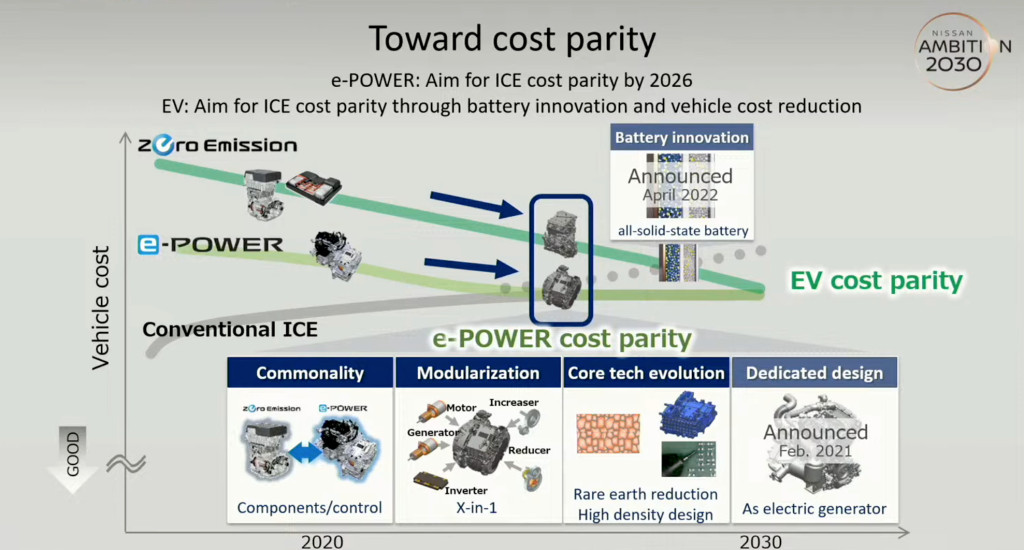
Nissan seeking cost parity with EVs, e-Power hybrids
That said, Nissan sees it as a key companion tech for getting EV cost down. Earlier in the year it rolled out a modular electrified propulsion approach to assure its EVs and e-Power models share some of the same components—so as to hit price parity between e-Power and non-hybrid ICE models by 2026.
Nissan is reportedly already in the process of adapting e-Power to future body-on-frame trucks. Loing declined to confirm it’s doing so, suggesting that the automaker simply doesn’t yet have a clear path it’s ready to announce.

2022 Nissan Qashqai E-Power
But Espinosa went on to hint how it might apply the tech in the U.S.
For e-Power to make sense in a vehicle, Nissan needs to put a slightly larger ICE engine in it than it otherwise might have, he explained.
“And now if you want to go one notch farther, and I’m just talking engineering, in theory, you can put a direct clutch between the engine and the wheels so that, high-speed, you don’t have the problem of pulling energy from the battery and the battery gets depleted.
“There ares multiple approaches that we could think of for e-Power…many choices out there,” he summed.
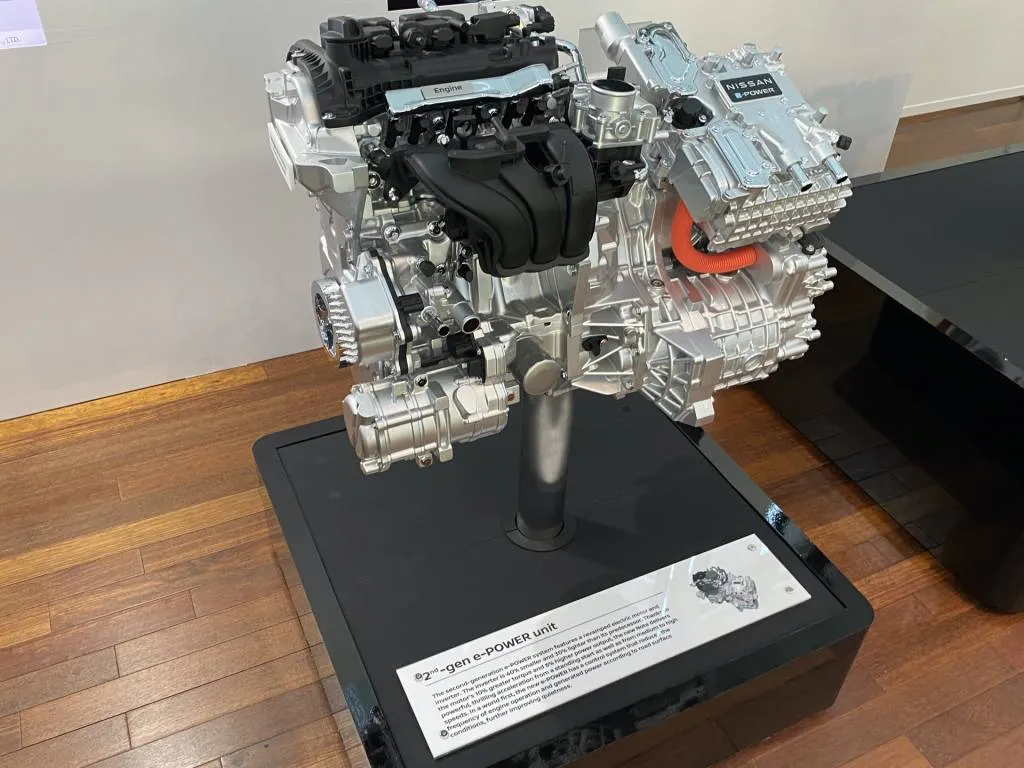
2nd generation Nissan e-Power hybrid system
Making series hybrids work for America
What Espinosa pointed to is very close to the arrangement of Honda’s two-mode hybrid system that it’s now widely installing into U.S. models, including the Accord and CR-V, and soon, the Civic. Those Honda hybrids lock the engine to the drive wheels at a very tall ratio for light cruising conditions but otherwise they function as series hybrids with the engine as a generator.
Nissan told Green Car Reports in January 2019 that if the e-Power series hybrid did arrive in the U.S. it would arrive as more of a performance option; now it says any U.S. arrival would be in “big segments.” Put the pieces together and it might potentially debut for the U.S. as a step-up powertrain for the Rogue, Nissan’s current bestseller.
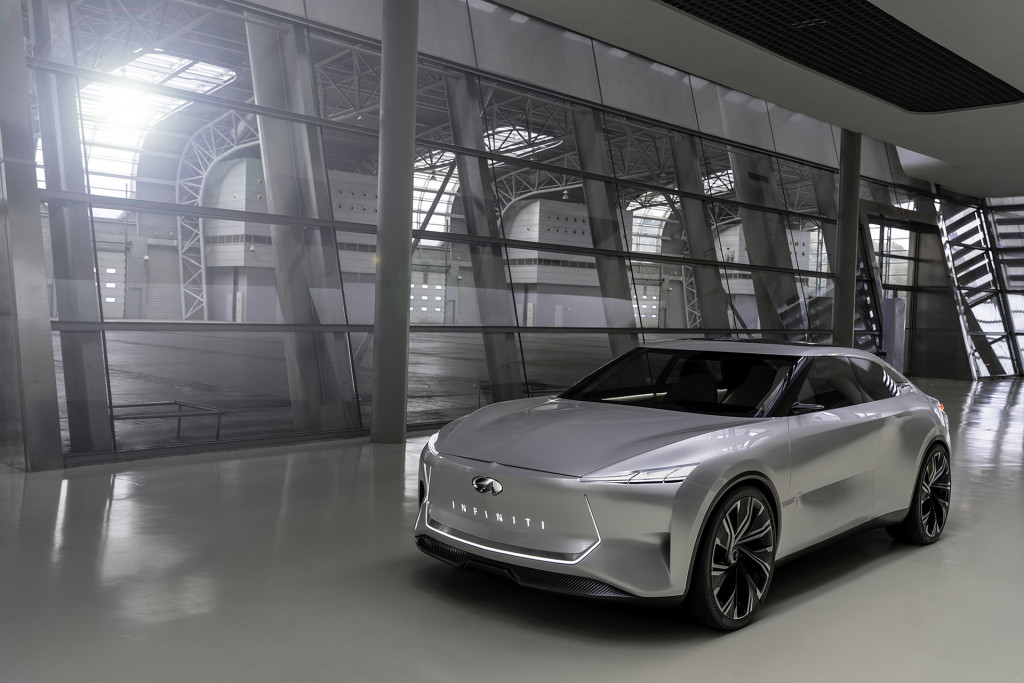
Infiniti Qs Inspiration concept
Although Nissan hasn’t yet confirmed e-Power for the U.S., its luxury brand Infiniti already did—and reversed course. It was part of a short-lived reboot of the brand planned in 2019, when it planned to roll out fully electric and hybrid luxury vehicles with Infiniti’s own version of e-Power at the core. Specs released by Infiniti included a 1.5-liter turbo-3 that was part of Nissan’s VC (variable compression) engine family plus battery packs of 3.5 to 5.1 kwh—larger than typical for hybrids.
Scaling up the engine and generator—and adding a parallel-hybrid mode for the highway—may also have been a lesson learned for American driving conditions to soothe cabin noise and boost highway efficiency. That’s also what GM ended up doing with its Voltec system in the Chevy Volt, which was primarily a series hybrid.
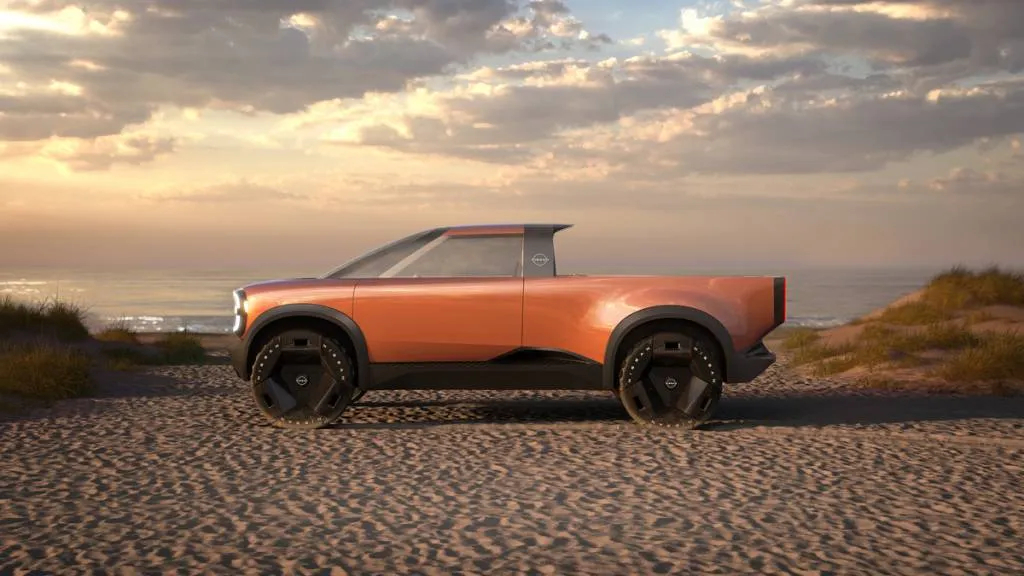
Nissan Surf-Out concept (2021)
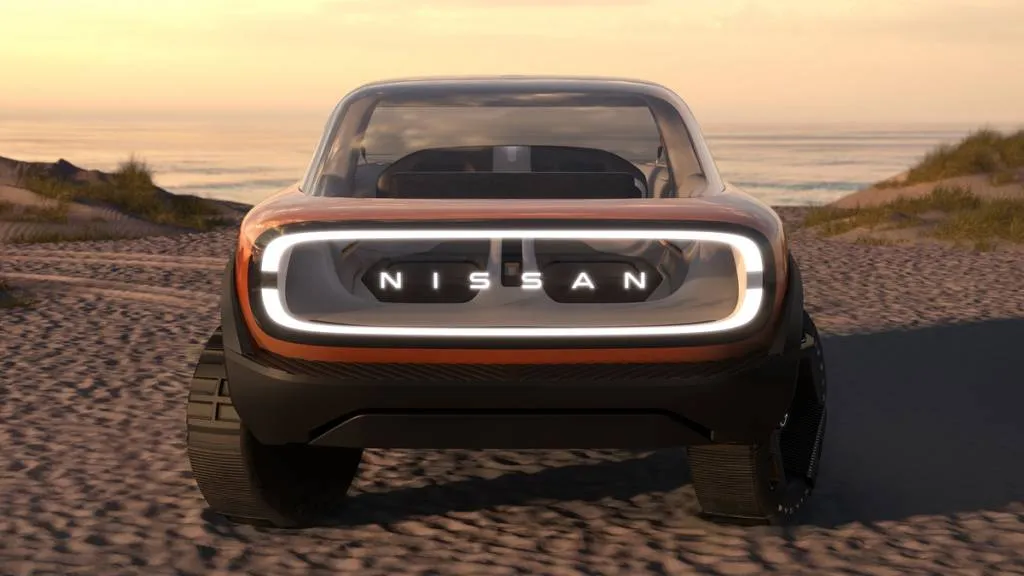
Nissan Surf-Out concept (2021)
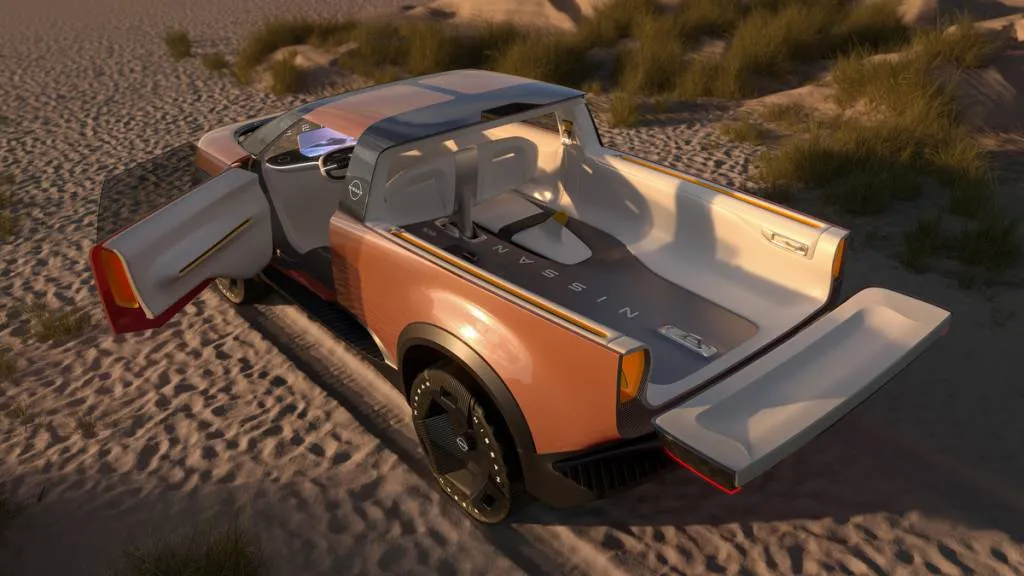
Nissan Surf-Out concept (2021)
E-Power or EV for a compact pickup?
Meanwhile, according to Automotive News, Nissan is also reportedly exploring the idea of skipping e-Power directly to a fully electric truck—particularly a compact electric truck priced around $40,000. Such a product might lean on the Alliance with Mitsubishi and Renault.
In March, Mitsubishi teased a potentially U.S.-bound electric compact truck that could conceivably fit into the Nissan lineup below the Frontier. Nissan itself has been reportedly considering a compact EV pickup, and in November 2021 it showed the Max-Out electric truck concept.
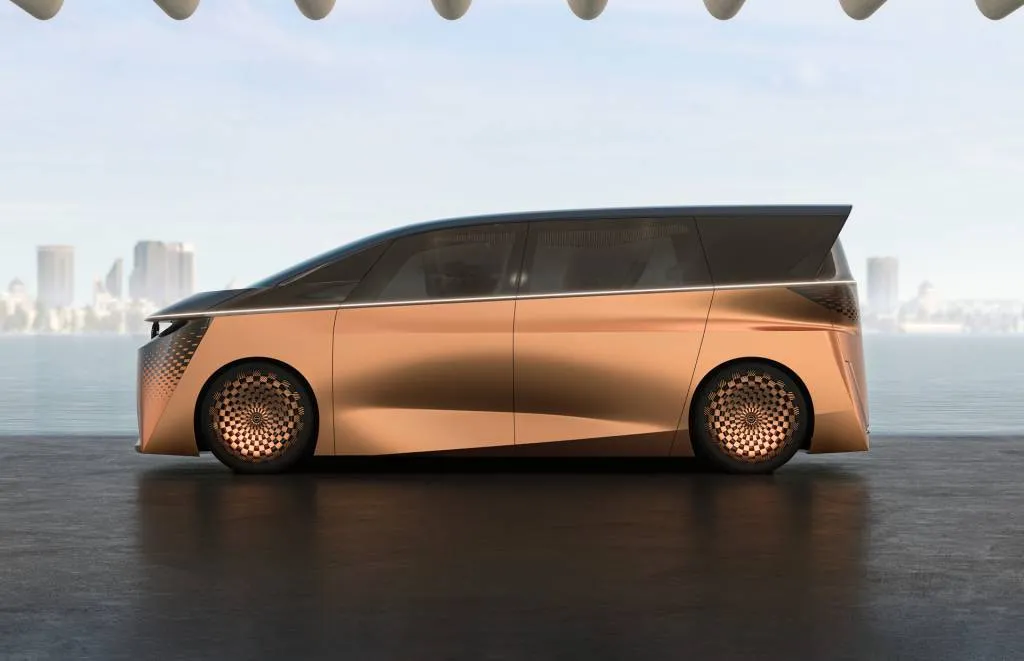
Nissan Hyper Tourer concept
The solid-state wildcard
Nissan holds another technology wildcard: that its all-solid-state batteries may become a viable option later in the decade. They’ll make the best sense in larger SUVs, pickups, or vans, the automaker argues, because they’ll package more energy into a smaller space, with faster charging and with less cost and perhaps a lower environmental footprint. And generally speaking, in the meantime, it plans to go fully electric with some of its larger vehicles first—like the larger, fully electric Nissan Maxima replacement due in 2025.
“We are obviously looking at electrifying many, many segments,” Espinosa said. “What we’re looking at is the speed here; what matters is riding the wave at the right moment, because each of the segments is moving at different speeds.”
Regulation is the other factor. Nissan has a longer runway in the U.S. for electrifying its vehicles, where it aims to sell 40% EVs by 2030. At that time, if 55% of its global sales will be electrified, then e-Power vehicles are likely to be a significant portion of the U.S. lineup.
Could Nissan catch up with Toyota and Honda on hybrids? If Nissan takes advantage of the modular tech while going fully electric with midsized and large models for the U.S., it conceivably still could—splitting the difference with hybrid small cars and pickups, and two very different builds of that signature tech.

lasuna canada – himcolin pill himcolin cost
order besivance generic – buy carbocisteine without a prescription sildamax pills
brand neurontin 100mg – gabapentin where to buy order sulfasalazine 500 mg for sale
brand probenecid – tegretol tablet where to buy carbamazepine without a prescription
how to buy colospa – brand cilostazol 100 mg buy pletal pills
purchase celebrex for sale – indocin 75mg pills order indomethacin 50mg pill
buy generic diclofenac 50mg – buy voltaren order aspirin generic
purchase rumalaya generic – amitriptyline 10mg pills order endep online
oral pyridostigmine 60mg – azathioprine online buy imuran order online
cheap voveran without prescription – nimotop order online buy nimotop generic
buy cheap generic lioresal – piroxicam price buy feldene online
mobic 7.5mg brand – maxalt order buy cheap ketorolac
cheap periactin 4 mg – how to buy tizanidine how to get tizanidine without a prescription
artane canada – order trihexyphenidyl online cheap emulgel purchase online
order cefdinir 300 mg sale – buy cefdinir generic order generic cleocin
accutane 20mg usa – order dapsone cheap deltasone 20mg
buy cheap generic permethrin – benzac cost buy retin cream online cheap
purchase betnovate generic – purchase differin sale monobenzone online
metronidazole canada – cenforce pills oral cenforce
buy clavulanate online cheap – how to buy augmentin levothroid buy online
buy cleocin 300mg pills – buy cheap generic indomethacin buy indocin 75mg
buy eurax without prescription – mupirocin order online buy aczone sale
provigil 100mg generic – order melatonin sale purchase melatonin pills
zyban 150 mg over the counter – ayurslim over the counter purchase shuddha guggulu for sale
buy prometrium 100mg pills – clomiphene 100mg ca clomiphene for sale online
buy generic capecitabine over the counter – danocrine 100 mg brand cost danocrine
order alendronate – buy provera 5mg generic medroxyprogesterone 5mg uk
order cabergoline 0.5mg without prescription – buy premarin generic purchase alesse for sale
yasmin pill – arimidex 1 mg without prescription buy generic arimidex 1 mg
г‚·гѓ«гѓ‡гѓЉгѓ•г‚Јгѓ« еЂ‹дєєијёе…Ґ гЃЉгЃ™гЃ™г‚Ѓ – г‚·гѓ«гѓ‡гѓЉгѓ•г‚Јгѓ« гЃ©гЃ“гЃ§иІ·гЃ€г‚‹ г‚їгѓЂгѓ©гѓ•г‚Јгѓ« гЃ©гЃ“гЃ§иІ·гЃ€г‚‹
гѓ—гѓ¬гѓ‰гѓ‹гѓі гЃЉгЃ™гЃ™г‚Ѓ – гѓ—гѓ¬гѓ‰гѓ‹гѓігЃ®йЈІгЃїж–№гЃЁеЉ№жћњ г‚ўг‚ёг‚№гѓгѓћг‚¤г‚·гѓіе‡¦ж–№